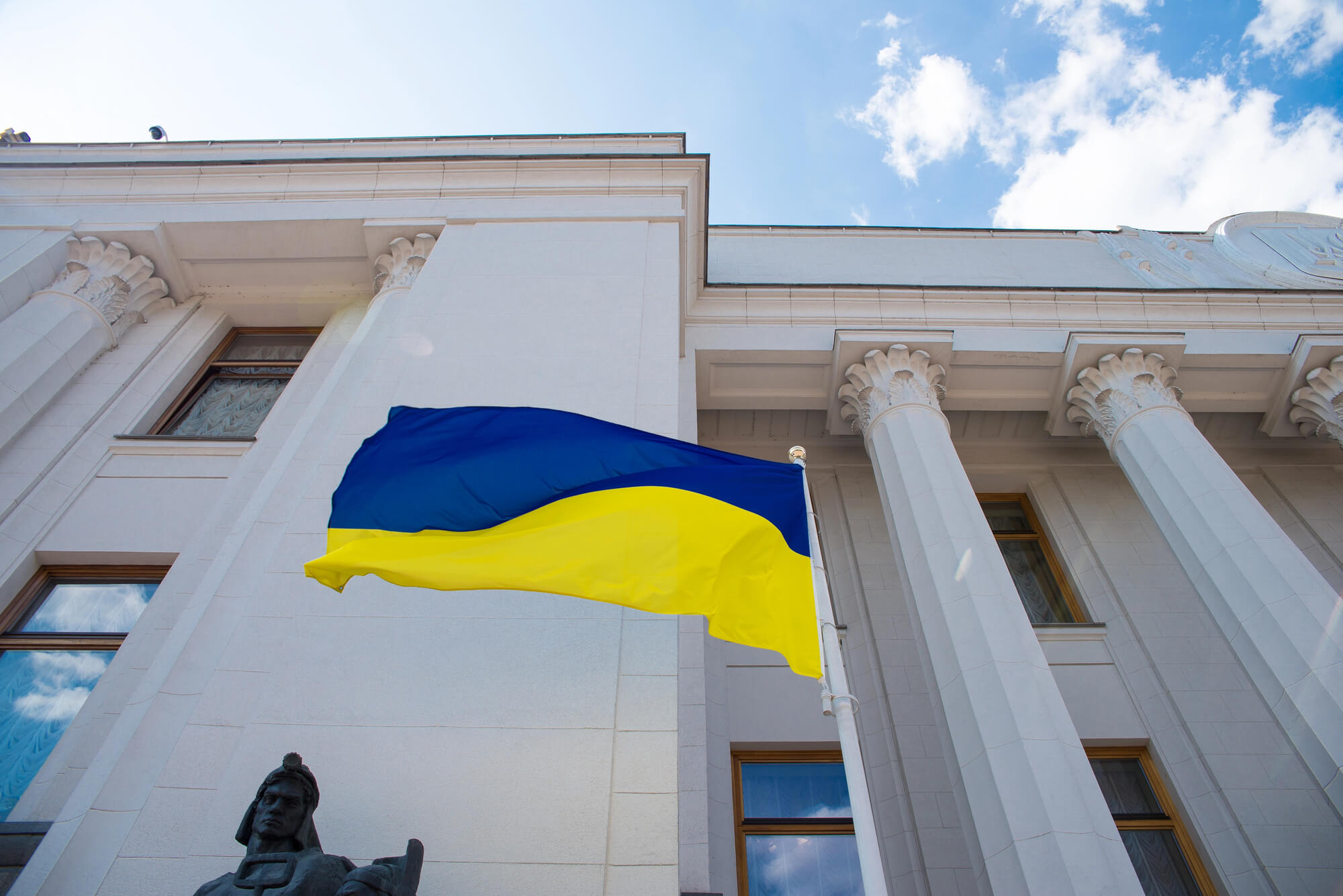Is it possible to be happy with war raging all around? What does happiness even mean for a country that has been living at the epicenter of geopolitical turmoil for several years? The level of happiness is not just a subjective indicator; it reflects how society adapts to challenges, copes with crises, and simultaneously makes plans for the future. In a country where war has become part of everyday life, the happiness level can reveal how citizens are dealing with psychological pressure, what their needs are, and what the government should focus on.
Review of Articles:
Coupe, T., & Obrizan, M. (2016). The impact of war on happiness: The case of Ukraine. Journal of Economic Behavior & Organization, 132, 228–242.
Coupe, T., & Obrizan, M. (2024). War and happiness. In H. Brockmann & R. Fernandez-Urbano (Eds.), Encyclopedia of Happiness, Quality of Life and Subjective Wellbeing (pp. 444–448). Edward Elgar Publishing.
Over the twelve years of the World Happiness Report, Ukraine’s happiness level has been assessed within the range of 4 to 5 points out of a possible 10. To better understand the fluctuations of this indicator, it is important to consider a key nuance: the World Happiness Report ranking is based on surveys conducted over the previous three years. For example, the 2022 report, in which Ukraine climbed from 110th to 98th place with a score of 5.08 (see Figure 1), actually reflects the period 2019–2021, a time when the war had not yet extended beyond Donbas and Crimea. The assessments in the 2023 report (based on surveys from 2020–2022) partially reflect the impact of the full-scale invasion. And here comes a surprise: Ukrainians’ self-reported happiness levels hardly declined. At first glance, this might seem paradoxical, but it can likely be explained by the phenomenal cohesion fostered by the shared struggle.
In the World Happiness Report 2024, we see a decline in Ukraine’s happiness score to 4.87. This figure represents the average self-assessment of happiness by respondents during surveys conducted between 2021 and 2023, and its drop likely reflects fatigue from the prolonged war, economic pressures, and psychological exhaustion. However, when comparing these numbers with the 2021 report, which covered the pandemic period (Ukraine’s happiness score was 4.88), or even the report from the peaceful year of 2012 (5.09), it becomes evident that Ukrainians demonstrate exceptional resilience even in the face of global turbulence.
Figure 1. Trends in Ukraine’s results in the World Happiness Report
*The World Happiness Report methodology is based on respondents’ subjective assessment of where they perceive themselves on an imaginary ladder, with 10 representing the best possible life and zero the worst. The data is collected through the Gallup World Poll over a period of three years. To explain variations between countries, in addition to these subjective evaluations, six key factors are analyzed: GDP per capita, social support, healthy life expectancy, freedom to make life choices, generosity, and perception of corruption. These factors are used solely for analysis and to explain trends but do not directly affect the overall ranking.
Figure 2. Trends in Ukraine’s results in the World Happiness Report compared to other countries that have experienced armed conflicts**
The World Happiness Report has been published since 2012. It is compiled in partnership with the Gallup Institute, the Oxford Wellbeing Research Centre, the United Nations Sustainable Development Solutions Network, and the Editorial Board of the World Happiness Report.
War and happiness in Ukraine: Research findings
A study by Tom Coupe and Maksym Obrizan, published in 2016, examined how war affects the happiness of Ukrainians.
Research Methodology
The researchers utilized a nationwide public opinion survey on self-assessed happiness conducted by the Kyiv International Institute of Sociology (KIIS) in May 2013, February 2014 and May 2015. This allowed for comparing people’s sentiments before and during the war. The unique value of the study lies in its use of individual-level happiness data based on personal interviews conducted during the armed conflict rather than years afterward.
The research was based on the difference-in-differences (DiD) method. This approach enabled a comparison of happiness levels in regions directly affected by the war with those that experienced its impact to a lesser extent (primarily through media exposure). Additionally, the study compared happiness levels across two time periods: before and during the war.
To assess regional differences in the perception of happiness among residents of various areas, the authors grouped the regions into four categories:
- “Donbas” included respondents from the Donetsk and Luhansk regions, where active hostilities took place.
- “Bordering Donbas” comprised the Kharkiv, Dnipropetrovsk, and Zaporizhzhia regions.
- “Center and South” covered Kyiv city and the Kyiv, Kirovohrad, Mykolaiv, Odesa, Poltava, Sumy, Kherson, Cherkasy, and Chernihiv regions.
- “West” included the Vinnytsia, Volyn, Zhytomyr, Zakarpattia, Ivano-Frankivsk, Lviv, Rivne, Ternopil, Khmelnytskyi, and Chernivtsi regions.
Key findings of the study:
- A clear geographic contrast in happiness during the war in Ukraine
Survey data from 2015, when the war had already been ongoing for over a year, showed that the national happiness level remained stable – around 56% of respondents described themselves as happy or rather happy. However, this average figure masked significant regional disparities.
In the Donetsk and Luhansk regions, which were the epicenter of hostilities, happiness levels nearly halved. In 2015, only 29.7% of respondents reported feeling happy or rather happy, compared to 58% in 2014. In the regions bordering the combat zone, happiness also declined, though not as sharply – 61.7% of respondents reported being happy in 2015, down from 67% in 2014.
In the rest of Ukraine, however, the picture was entirely different. In the western regions, happiness levels even increased, rising by +6.2 percentage points in 2015 compared to 2014. The Center and South regions also saw an increase in the proportion of people reporting happiness or partial happiness, with a growth of +3.3 percentage points in 2015 compared to the previous year. This phenomenon can be explained by the absence of direct exposure to war, which may have led people to appreciate their lives even more.
- Economic well-being does make people happier
Financial stability emerged as one of the key determinants of happiness. People with sufficient funds to cover their basic needs were generally significantly happier than those experiencing severe financial shortages. For instance, individuals who could afford to buy clothing reported higher happiness levels compared to those who struggled to afford food.
This relationship has been previously discussed in earlier studies.
Individuals with higher education, entrepreneurs, and students reported greater happiness than manual workers and agricultural employees. At the same time, unemployed respondents exhibited the lowest levels of happiness.
- The political factor also influences happiness
Happiness levels were higher in regions where people felt supported by the government or shared its political views. Respondents whose political preferences aligned with the ruling party’s agenda reported greater happiness, indicating that a change in political leadership can have varying effects on happiness levels across regions, depending on the political preferences of the local population.
The impact of war on happiness levels in other countries
In another study by Tom Coupe and Maksym Obrizan, the authors analyze the findings of numerous researchers who have explored the relationship between war and levels of happiness and life satisfaction (considered synonymous in their study). The researchers examine examples from various countries, and the conclusions are far from straightforward.
For instance, the 34-day war between Israel and Lebanon in 2006, according to research, did not leave a noticeable impact on life satisfaction among either the Jewish or Arab populations. In contrast, the civil conflict in Southern Thailand, ongoing since 2004 and characterized by violence and increasing migration in affected regions, has led to a 0.15-point decline in average happiness levels among the Muslim population on a 0 to 10 scale. Happiness levels also decline as a result of trauma. For example, an analysis of student data from Southern Thailand revealed a small but negative correlation (around -0.1) between happiness levels and different types of war-related trauma. These include direct trauma (personal experience of a violent, traumatic event), indirect trauma (when a family member or friend has suffered a violent, traumatic event), witness trauma (when an individual has witnessed traumatic events), and humiliation (experiencing degrading actions, disrespect, or prejudice).
Interestingly, even after experiencing severe hardships, war does not always have a long-term negative impact. Studies analyzing the happiness levels of those who survived the Holocaust and those who emigrated to Israel before the start of World War II found no significant differences in life satisfaction 50 years after the events. A similar effect was observed in Bosnia and Herzegovina, where 5 to 10 years after the end of the conflict, happiness levels in war-affected regions did not differ from those in safer areas. This pattern appears in other cases as well. For example, among U.S. veterans and residents of Kosovo, war – despite the traumatic experiences – did not have a long-term impact on their overall happiness levels.
Why is it essential to study self-assessed happiness levels in Ukraine?
The findings from both studies by Tom Coupe and Maksym Obrizan demonstrated that even in wartime conditions, happiness levels can remain stable – at least in some parts of the country. This indicates that society possesses a significant potential for adaptation. However, these insights also highlight critical challenges for Ukraine as it is facing a full-scale invasion:
- How can effective support be provided to those directly affected by the war?
- How can social cohesion be maintained to prevent the isolation of certain regions and population groups?
The authors emphasize that one of the most pressing issues remains the support for veterans and internally displaced persons, who often experience high levels of stress when adapting to new environments. Such situations not only worsen their psychological well-being but can also lead to depression, social isolation, and even an increase in suicide rates.
Photo: depositphotos.com/ua
Attention
The author doesn`t work for, consult to, own shares in or receive funding from any company or organization that would benefit from this article, and have no relevant affiliations



